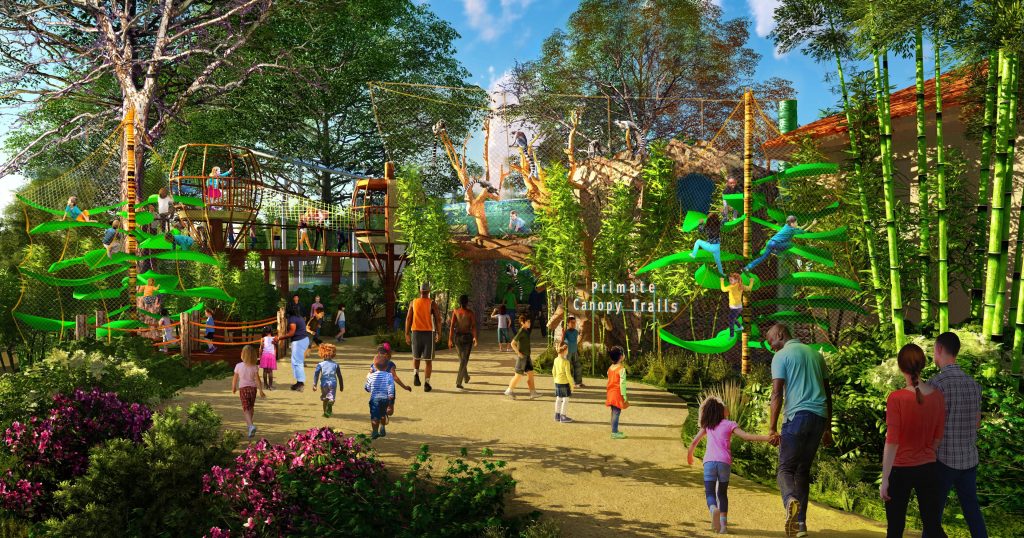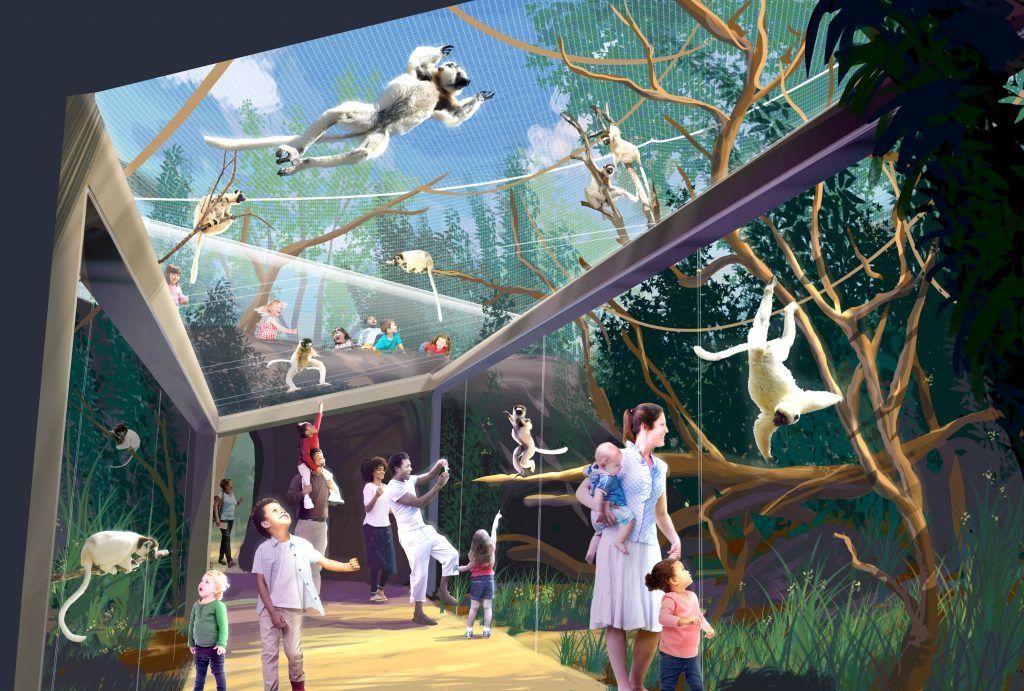The Primate Canopy Trails, above, will open in 2021. The new element will allow visitors to venture into the canopies to explore the animals’ new homes. Artistic rendering courtesy of the St. Louis Zoo.
The St. Louis Zoo is hopping on board with the trend across zoos nationwide to provide more naturalistic space to monkeys with a multimillion-dollar expansion of its Primate House.
The zoo debuted its plans last week for the creation of Primate Canopy Trails, an $11.5 million, 35,000-square-foot outdoor expansion of the Primate House. Unlike the small glassed-in monkey rooms popular in decades past, the expansion will allow monkeys to live outdoors with natural sunlight and fresh air.
Construction for Primate Canopy Trails will begin by late 2019 and is scheduled to open to the public in 2021, according to a news release. The new addition will consist of eight new outdoor homes for primates – lemurs, Old World monkeys and New World monkeys – adjacent to the current Primate House.
“Most importantly, Primate Canopy Trails allows us to improve animal care, health and well-being by providing access to enriching outdoor habitats, sunlight and fresh air,” zoo President and CEO Jeffrey Bonner said in the release. “It also will allow visitors to experience primates like never before.”
Under the plans, new overhead mesh tunnels connected to the Primate House will lead to tall existing sycamore trees and other outdoor habitats. These “sky trails” will have a flexible design that allow animals to explore different habitats at different times, boosting the stimulation in their daily lives. Zoo visitors also will find different primate species in new places each time they visit, creating fresh experiences for animals and humans alike.
“Being outside is critical for primates’ well-being, and this new habitat is a demonstration of the Zoo’s commitment to providing quality animal care,” said Heidi Hellmuth, curator of primates at the zoo.
On any given day, a group of primates could be in a wide variety of habitats. The zoo estimates that there could be as many as 70 different habitat combinations for the various groups of primates to enjoy Primate Canopy Trails.
“One thing all our primates have in common is their love of the canopies and habitats situated high in the trees,” Hellmuth said. “However, many primates worldwide are threatened with extinction and have declining populations, mostly due to extensive habitat loss, including forests.”
Primate Canopy Trails features climbing structures that allow visitors to explore, much like monkeys and lemurs move about their forest homes. While exploring and playing, visitors learn about the importance of preserving the world’s forests. Visitors also will be able to experience primates at treetop canopy levels, strolling by the outdoor habitat on an elevated boardwalk. At one point, visitors can travel through a primate habitat within a clear acrylic tunnel.
To see what the proposed expansion will look like, browse our gallery below.
Built in 1925, the Primate House is home to approximately 40 primates representing 14 different species. Although the indoor habitats were renovated in 1977 and will continue to be used, there are only six outdoor habitats currently available for use by lemurs, sifaka (pronounced “she-FOCK”) and saki (pronounced “SAH-key”) monkeys alone.
Many species have no access to the outdoors because the animals are too small or too strong for the existing mesh of the outdoor habitats.
The increased number, size and complexity of habitats also will allow the zoo to increase its participation in cooperative breeding programs, as the zoo will be able to accommodate larger groups as the primate families grow.
This exhibit will be made possible by the generosity of many donors, including significant contributions from the Dana Brown Charitable Trust and the estate of Rudolph L. Wise.
The zoo said in its announcement that it is a leader in primate care and conservation. Known for its expertise and experience, the Primate House team is “effective and creative” at managing groups of primates at the zoo, officials said. The zoo also participates in Association of Zoos and Aquariums (AZA) Species Survival Plans (SSP) for all of the primate species at the zoo and says it is a “leader in primate conservation work in the wild.”
For more information, visit stlzoo.org/PrimateCanopyTrails.
















